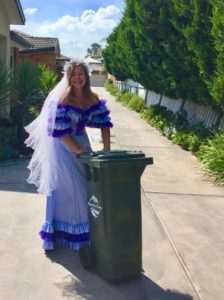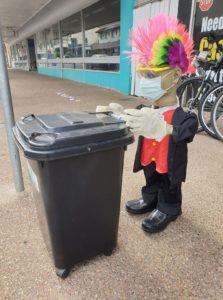Update 6 April 2020
ScoMo’s been quiet on communications today, so we’re zooming out to world news.
I learned something today. Working closely alongside the World Health Organisation (WHO) is the International Monetary Fund (IMF). I liked the clear explanation by Kristalina Georgieva – Managing Director of IMF:
“WHO is there to protect the health of people. The IMF is there to protect the health of the world economy. …saving lives and protecting livelihoods ought to go hand-in-hand. We cannot do one without the other.”
When ‘Stay at Home’ Means Go Hungry – the Dilemma of the Poor
In a more sobering statement, Ms Georgieva said,
“Never in the history of the IMF have we witnessed the world economy coming to a standstill. We are now in recession. It is way worse than the global financial crisis and it is a crisis that requires all of us to come together.”
While the virus hits the health of the vulnerable the hardest, the financial crisis hits the weakest economies of the world the hardest. We’ve seen the devastating images of workers fleeing cities to the security of their rural homes in India. Developing countries that rely on exports are hard hit as prices collapse.
Developed countries like Australia can provide social welfare for their nations, but at least 90 countries cannot, and have requested help from IMF’s emergency fund. For some of these countries, ‘stay at home’ means go hungry. Their governments face the dilemma – do they support their people to survive, or do they fight the virus? The IMF is removing the dilemma of that decision in three ways:
- Increasing the availability of emergency funding, currently a $1 trillion war-chest.
- Raising grant funding to provide relief for debt obligation to the IMF.
- Calling on official creditors to countries to permit a standstill on debt services for the next year, so that these countries can attend to their immediate priorities.
Despite this dark chapter in world economics, Ms Georgieva leaves us with a thread of hope:
“We will get through this, but how fast and how effectively will depend a lot on the actions we take and on making sure that in these actions we bring the world together.”
Transitioning Back to Stability
What will it look like when the heavy social restrictions come to an end?
Some countries in Asia have relaxed restrictions, only to tighten them up as the virus does its rounds again. Unless we have a vaccine, the virus will keep hitting us, right?
If we can still get infected, could that take us all back to square one?
WHO Director-General, Dr Tedros Adhanom Ghebreyesus, explained why it doesn’t have to. These strict social distancing measures are buying time to build and strengthen health systems. They give countries time to invest in a more robust response to enable us to live with this virus. Investments like:
- Public health services – growing capacity through staff and facilities so that they can deal with the severely ill
- Surveillance of the virus – contact tracing, isolation and quarantine
- Building information systems
- Therapies and vaccines to put an end to the virus
There may be a period of adjusting restrictions, relaxing and tightening again as needed to keep physical distancing, but this should not turn into a perseverating cycle lurching from lockdown to release and back again. Ideally, as we transition to our new normal, we need a public that is aware and empowered enough to know what to do if they’re sick – where to go, to have access to medical staff, access to testing, to be able to self-isolate. This is a state of disease control that we did not have before.
Health Minister, Greg Hunt, thanked Australians for what we’ve done to flatten the curve – we’re now down to only 5% increase in new cases, from the initial 30%. His comments in an interview yesterday reflected the WHO standpoint:
“Half of our job is to reduce infections and flatten the curve, and the other half is to boost capacity.”
The Stats
Worldwide, we have now topped 1 million confirmed COVID-19 cases.
Back in Australia:
- A new daily dashboard of the stats for Australia can be foundhere.
- There have been 5744 confirmed cases, and sadly, 36 have died.
- There are currently 91 cases in ICU
- 757 people have recovered.
Hope Over Fear
Jobs, jobs, and more jobs for Australians
- The government has launched Jobs Hub, a website that enables you to search for job vacancies by location or by employer, and includes an overview of the most wanted roles. Check it out if you’re looking for work.
- In South Australia, job assessments are being fast-tracked to keep the construction economy moving. A Planning System Acceleration Program will create more than 30,000 jobs in the next 6 months, clear a backlog of Land & Environment cases awaiting approval, and progress infrastructure projects.
And for the lighter side of life:
When Taking the Bin Out is the Highlight of Your Day…
… make sure it’s a worth every minute.
It started in one neighbourhood and has gone viral. Dress up to turn heads in your grand moment of getting out of the house to take the wheelie bin to the curb, and take a photo. The Bin Isolation Outing Facebook group showcases some of the 300,000 participants and is good for a laugh.
Your Tip for Today
Staying home can mean risk of domestic violence for some. More close contact, added financial pressure, and job stress can make the home a hotspot rather than a sanctuary.
For advice and information to help make wise decisions, have a look at some steps mapped out by the NSW government here.
Here are some key things that you can do to help improve your safety in a harmful situation:
- always have a mobile phone with you in case you need to call 000
- ask neighbours to call Police on 000 if they hear fighting, shouting or noises that sound like violence
- if possible, have a spare mobile phone with prepaid credit on it
Prepare an escape plan. You may need to leave immediately to avoid serious harm.
- Let a trusted family member or friend know that you may need their support if you have to leave quickly. For example, agree if you can stay at their place in an emergency or if they could pick you up from a designated spot. Or is there a women’s shelter or refuge that you and your kids can go to?
- Have a code word that tells a family member or a friend that you feel unsafe and need help. That way you can make a call even if the violent partner can hear you.
- Install the free Aurora or Daisy app on your mobile phone to help you get in touch with friends without the violent partner knowing and to help you find services such as emergency accommodation.
- Have an ’emergency bag’ packed and ready with essential items. Hide it or give the bag to a trusted family member or friend to keep for you.
Australian Helplines:
Domestic Violence Line
1800 656 463
National Domestic Violence and Sexual Assault Helpline (24 hours):
1800 737 732 (1800 Respect)
Lifeline:
131 114
Child Protection Helpline
13 2111
What About You?
I’d love to hear your stories.
- What are you grateful for today?
- Are you enjoying your wheelie bin outings?
- What do you think our ‘new normal’ will look like?
I’m keen to see your comments below.
Information Sources
WHO Press Conference – 3 April
Minister of Health
Department of Health stats
John Hopkins University COVID-19 map
https://gisanddata.maps.arcgis.com/apps/opsdashboard/index.html#/bda7594740fd40299423467b48e9ecf6
Jobs Hub
https://www.dese.gov.au/covid-19/jobs-hub
Bin Isolation Outing Facebook Group
https://www.facebook.com/groups/306002627033697/
NSW jobs boost through fast-tracked planning system
https://preview.nsw.gov.au/news/jobs-boost-through-fast-tracked-planning-system
NSW Gov – Domestic violence – How to stay safe
https://www.facs.nsw.gov.au/domestic-violence/stay-safe



